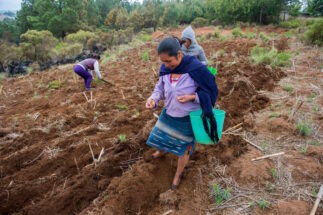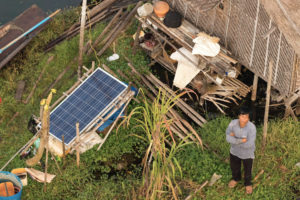The disruptions of the coronavirus pandemic have taken a toll on China’s flagship foreign infrastructure and investment programme, the Belt and Road Initiative (BRI). Its nature, pace and scope are all likely subject to change in Latin America in the near and long-term.
Many Chinese-backed projects framed as part of BRI have hit the brakes across the region, as the Covid-19 crisis has affected manufacturing, supply chains and the movement of people and goods. Many countries have been in lockdown for months, with only essential activities authorised.
There have been fewer new Chinese infrastructure projects in Latin America this year and no new countries have formally signed a BRI agreement, with the ones that already have raising concerns over debt repayments to China as their economies face major difficulties.
“We are entering into a new phase of BRI in Latin America, as China has been forced to transform the initiative,” said Ricardo Barrios, analyst at RWR Advisory Group. “China has less money to lend and is being more selective about how it uses it, while it also has to cope with its own domestic economic problems.”
19
Latin American and Caribbean countries have signed BRI cooperation agreements
Launched in 2013, the BRI aims to resurrect the ancient Silk Road and maritime trade routes, as well as developing new links, and to enhance economic and political cooperation between participating countries and regions. Latin American countries began joining the initiative in 2017, with 19 countries now having signed an agreement.
In just a decade, trade between China and Latin America has increased more than 20-fold as regional partners have signed hundreds of agreements and broken ground on dozens of key energy, transport and infrastructure projects in strategic locations. Diplomats have described the region as a “natural extension” of BRI.
“The coronavirus changes a lot of things, both for China and Latin America. BRI is not a priority right now as everyone is preoccupied with the virus,” said Pepe Zhang, associate director at the Atlantic Council’s Adrienne Arsht Latin America Center. “The initiative is currently on the back burner.”
Latin America’s BRI hopes and dreams
For the Latin American countries that have already said yes to the initiative, closer ties with China through BRI were supposed to bring finance for energy, roads and ports, among other benefits. However, that hasn’t necessarily been the case so far, and Chinese funds have declined over the past few years.
Margaret Myers, director of the Asia & Latin America Program at the Inter-American Dialogue, said that apart from a friendlier relationship with China, the direct benefits haven’t been clear. She listed a few exceptions, such as Bolivia getting easier access for some of its exports to the Chinese market.
“It’s a tool that China uses to signal its own commitments to a given country’s development and growth. If a country signs BRI, China sees it as a very important symbolic gesture, especially now with the initiative being challenged by the US and other developed countries,” she explained.
Argentina, Brazil, Colombia and Mexico, the four largest economies in Latin America, which account for about 70% of its GDP, haven’t signed a BRI agreement yet, indicating that the initiative still sparks doubts in the region. Of those, Argentina could be closest to signing after a recent change of administration.
For the countries along the Belt and Road, the main task is to control the impact of BRI on government debt
Still, all of them have comprehensive bilateral cooperation agreements with China and are host to Chinese infrastructure projects. This has raised questions about what can actually be classified as a BRI project, something that China has been trying to clarify in recent guidelines and documents.
“Not even China knows exactly what BRI is. Many things that already existed before BRI are being framed under it,” said Álvaro Méndez, co-founder of the LSE Global South Unit. “Latin America is still grasping to understand what the initiative actually involves. Policymakers in the region confuse it with other things.”
For Latin America, social and environmental risks feature prominently in concerns related to BRI. Non-governmental organisations have questioned various Chinese projects in the region, many labeled as part of BRI, for violating human rights and non-compliance with environmental standards.
But that’s not the only issue. Countries such as Venezuela and Ecuador have borrowed heavily from China over the last few years and now have a high debt-to-GDP ratio. Repayment looks difficult amid economic crises exacerbated by the pandemic.
Last month, China announced that it was pursuing debt relief for developing countries, largely in Africa, through the G20 debt suspension initiative. With no announcements so far for Latin America, the most likely scenario will be more flexibility on interest payments and deadlines, experts say.
“China will likely show flexibility towards Latin America’s debt. But this doesn’t mean forgetting about the debt,” Barrios said. “China can’t expect the same things as before the pandemic, and showing flexibility will be effective to gain some good will from the region. But it will be on a case-by-case basis.”
Meanwhile, the funding seems to continue. State-owned oil firm Petroecuador is considering entering a new five-year oil export contract with China in exchange for US$2.4 billion in Chinese state financing between June and October 2020. Between US$300 and $400 million would be used to pay off part of Ecuador’s existing debt to China.
New areas of cooperation
With China largely focused on its own economic recovery, investment in large infrastructure and energy projects in Latin American countries signed up to the BRI won’t likely be on the horizon, at least in the short-term.
Nevertheless, the pandemic opens up new areas of opportunity for China and it intitiative across the region, especially the so-called Health Silk Road (HSR) and the Digital Silk Road (DSR) – both areas that experts agree have a lot of future potential.
The HRS has gained momentum through the coronavirus outbreak, with many countries from the region receiving donations or purchasing medical supplies from China. At the same time, the DRS is also booming amid the pandemic, with countries using China-inspired digital solutions to combat Covid-19.
Chinese companies that are already well established throughout the BRI, such as Huawei, Alibaba and Tencent, could find Latin America a natural fit for expanding their activities. That could also be the case for China’s medical technology sector.
For Latin America, an area of specific interest will be the deployment of 5G technology. Of the five companies in the world offering complete 5G telecommunication systems, two are from China – ZTE and Huawei. The latter has expanded across the region in recent years.
“China is a top provider of telecommunications equipment and tech and it is trying to position its companies abroad,” Myers said. “It’s a critical industry for China that has received support from the government. There will be companies able to invest overseas in this sector.”
Overall, the short pause the pandemic has forced also represents an opportunity to reflect on how the BRI can be improved, Chinese researcher Xianbai Ji wrote in a recent column. This includes finding new ways to finance projects beyond loans from Chinese policy and state-owned commercial banks as well as discussing debt issues.
“For the countries along the Belt and Road, the main task is to control the impact of BRI on government debt,” he argued. “Countries should formulate special infrastructure strategies to clarify the role of BRI in their national long-term social and economic development plans.”









